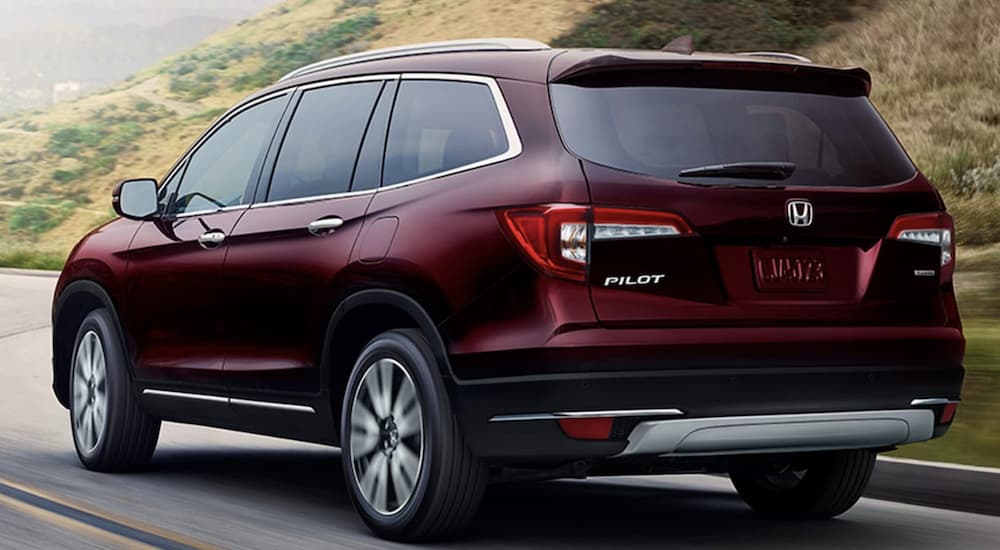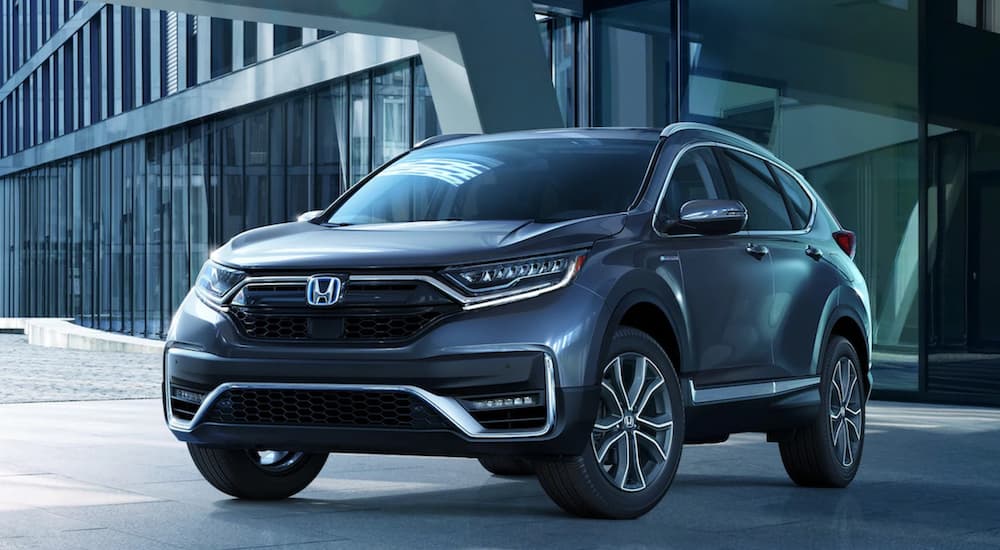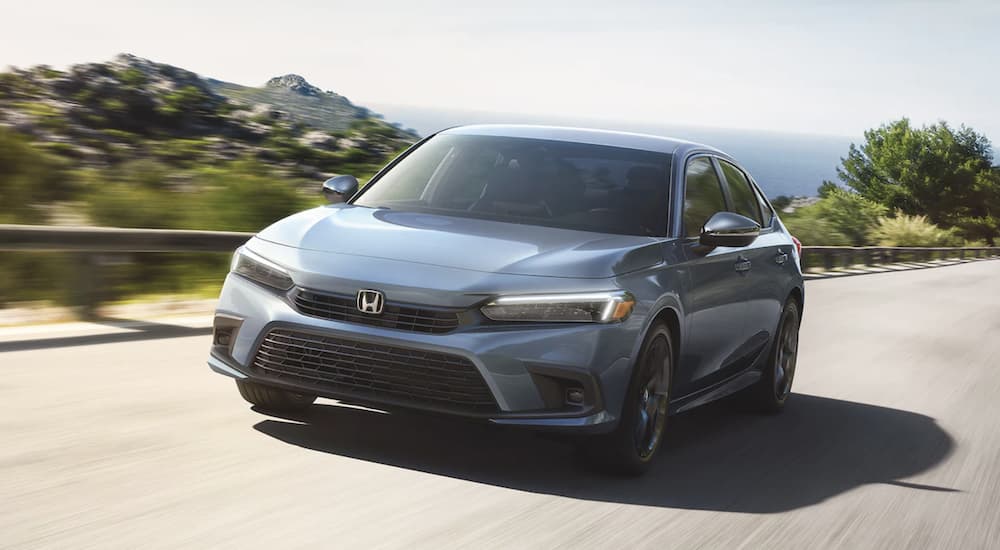Advanced driver-assist systems are commonplace features in many modern vehicles, such as safety alert systems, adaptive cruise control, and other automated mechanisms. Most vehicles are considered to have Level 1 or Level 2 advanced driver assist systems, also known as ADAS. One of the market leaders in Level 2 ADAS is Honda, which has made breakthroughs with its Honda Sensing suite, a collection of both advanced automated driving assistance and AI-assisted safety tech.
Honda is also one of the rare companies to legally get a Level 3, fully autonomous vehicle out on the road––a breakthrough for the automotive industry in a number of ways. But Honda doesn’t plan on stopping there. It won’t be long before you’ll be able to visit a local Honda dealer and find a Level 4 ADAS vehicle for purchase. There’s still a way to go before you see any Level 4 vehicles on public highways and side streets…but it may not be as long a wait as you expected.
Safety Comes First
Level 3 automation requires a lot of safety measures in place, and while the Honda Sensing suite has been a ready-made combination of software and hardware to move closer to fully automated driving, it’s still considered a Level 2 system. This is technology that’s widespread throughout Honda’s lineup of vehicles, from their best-selling CR-V and Civic to the popular Passport and Ridgeline. It’s also tech that’s consistently being improved with each new model year release.
With adaptive cruise control, lane-keeping assistance, road departure mitigation, pedestrian detection, and collision-mitigation braking, Honda has a robust collection of active safety systems in place that lends itself well to automated driving. However, active and passive safety systems are still a far cry from actual autonomous driverless vehicles. Having a computer perform all of the complex microsecond decisions that humans make on the road is risky business, which is why Honda took a page out of its own safety suite to mitigate potential disasters by moving slowly and cautiously into the automated driving space.

Honda Sensing Elite First Public Test Run
Honda’s first foray into Level 3 autonomous driving actually took place last year in Japan, when lawmakers approved putting automated driving vehicles onto highways. Honda took advantage of this by producing 100 modified Honda Legends, which were made available at select Honda dealers throughout the region. They managed to sell approximately 80 before the end of the year, which isn’t a bad number for a public test run of highly anticipated next-generation driving technology.
The real highlight of the Honda Legend, however, is the fact that it’s utilizing the next generation of the Honda Sensing tech, appropriately called Honda Sensing Elite. The Honda Sensing Elite contains all of the tech and standard functionality of the Honda Sensing suite on the current lineup of Honda vehicles, but with added features such as active lane-change with hands-off functionality and a traffic jam pilot that can safely navigate through congested roads.
While the technology is quite fascinating, Honda hasn’t made any announcements about bringing Honda Sensing Elite functionality to American Honda dealers. However, that doesn’t mean that we won’t be seeing these features applied to Honda’s near-future production lineup, especially based on the current moves Honda is making. What sort of moves? How about 360-degree moves?
Honda Sensing 360 Advances The Honda Sensing Elite Breakthrough
Even though Honda currently doesn’t have any vehicles outside of Japan equipped with the Honda Sensing Elite technology, the fact that it managed to get the breakthrough technology approved for use on the road was enough to open the floodgates to further advancements in automated driving technology. More specifically, even while Honda is reserved about including Honda Sensing Elite in its cars, trucks, and SUVs, Honda has recognized that more advanced and aggressive sensor and object recognition technology will help normalize and improve the safety of AI-driven vehicles.
Honda teamed up with Renesas Electronics Corporation to collaborate on the next evolution of Honda Sensing technology, known as Honda Sensing 360. Honda originally teamed with Renesas for the electronics in the Honda Legend’s Honda Sensing Elite system. Improvements and advancements were made to the automated system, which is now being called the Honda Sensing 360 system because it’s an omnidirectional safety suite that features even more advanced technology than ever before.
What exactly does the Honda Sensing 360 do beyond being more “advanced” than the Honda Sensing Elite, and what sort of benefits can drivers see from it? Well, it utilizes five millimeter-wave radars to help with improved automatic braking, steering control, deceleration, and collision mitigation. According to J.D. Power, Honda will be including the Honda Sensing 360 suite in upcoming vehicles, starting with the Acura brand in China. Honda plans on making it a standard feature in all of its vehicles by 2030.
The Future of Automated Driving Is Closer Than You Thought
While it might seem like Honda’s plans aren’t really surefire when it comes to committing to automated driving, such an assessment couldn’t be further from the truth. The company actually has the second-highest market share of Level 2 ADAS vehicles on the road, right behind Toyota. So it definitely would behoove Honda to stay alert and keep improving and iterating on the technologies it currently has. Mercedes-Benz, Volvo, and Tesla are all vying to take control of the automated driving market, too, so there’s a quiet rush of sorts to improve and stabilize the tech for a mass roll-out. This rings especially true as Chevrolet continues to improve and iterate its Super Cruise semi-autonomous driving tech, and Ford focuses on tapping the market with the similar BlueCruise system.
With regions like Japan positioning to legalize fully autonomous vehicles, it gives companies like Honda headway to focus on technologies that don’t even require a human driver. What does that mean exactly? It means that Level 4 fully autonomous driving would be allowed on Japanese roads and highways if the bill gets the a-okay from Parliament. This would mean that companies like Honda would then be allowed to put Level 4 automated vehicles on practically all the roads in the region.
In fact, the company is already anticipating as much. Honda’s roadmap for automated driving started with a much more aggressive push in 2020, which led to the release of its first Level 3 automated vehicle in Japan in March 2021 with the Honda Legend. According to that same very same roadmap, Honda is looking to have Level 4 automated vehicles––which would require no human input––available for private use by 2025, regional policies permitting.
Level 4 Automated Driving in 2025…Are You In?
It’s one thing to announce ambitious plans to bring fully automated Level 4 vehicles to the market by 2025, but it’s a completely different thing to actually get people to visit a Honda dealer to buy the vehicles. There are a lot of logistics that go into marketing and trying to pitch a driverless vehicle to the masses. Who exactly is the target market for such a vehicle? Older people who may not see so well? Younger drivers who need a safety-driven AI to guide them through the streets to reduce accidents? Busy parents trying to get their kids ready for school in the car, truck, or SUV while the AI handles the actual driving?
There’s certain reticence from some drivers who are leery of AI-driven technology. Others are excited for the future, being able to experience the kind of high-tech automation that we only thought possible in sci-fi films. But where does the average person stand? Well, back in 2019, Reuters conducted a poll and found that 64% of Americans weren’t interested in buying a self-driving car. Understandably so, many Americans feel like self-driven vehicles should be held to higher safety standards than human drivers. The big question is, will Americans have warmed up to AI-driven automobiles when 2025 rolls around and Honda prepares to introduce Level 4 automated vehicles to the general market? I guess we’ll find out in a few years.





